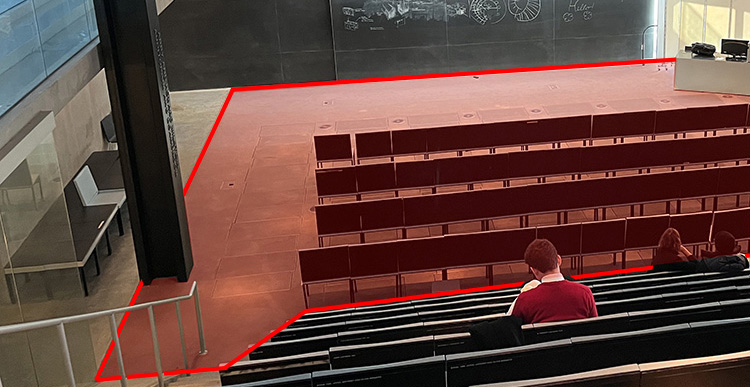
In all 50,000 square feet of Milstein Hall at Cornell University, this is the only carpeted area — at the bottom of the auditorium. Still, it’s good enough for 1 LEED point!
I spoke to the second-year Bachelor of Architecture class at Cornell University about health, safety, and welfare — things like fire safety, structure, accessibility, and sustainability — and the role played by politics and architectural expression in constraining or even damaging those utilitarian functions of buildings. The talk was based in large part on my book, Building Bad: How Architectural Utility is Constrained by Politics and Damaged by Expression.
The lecture on March 13, 2023, ended up being way too long, so I delivered the final sections two days later, on March 15, 2023. I divided the Zoom lecture recordings into six parts, corresponding to the sections of the lecture, and I put them all online as separate videos (find links below).
Some light editing was in order: I removed most of my snarky remarks; eliminated copyrighted material (in particular, excerpts from Monty Python’s “Architects Sketch” had to go); corrected one or two words (e.g., “access” got changed to “axis”); and deleted as many “ums,” “rights,” and “you knows” as I could.
Health, safety, and welfare: The role played by politics and architectural expression
© 2023 Jonathan Ochshorn, Professor Emeritus, Cornell University
Part 1. Introductory comments on health, safety, and welfare
Part 2. Introductory comments on expression
Part 3. Fire safety: Politics and expression
Part 4. Structure: Politics and expression
Part 5. Accessibility: Politics and expression
Part 6: Sustainability: Politics and expression
